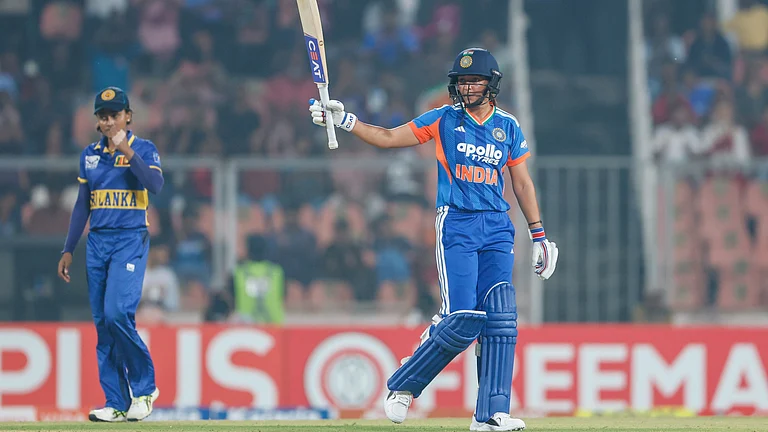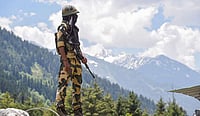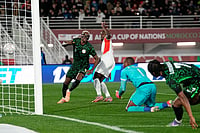As Sri Lanka votes in a historic presidential election, the first since the economic crisis of 2022, the political scene appears quite competitive. While there are 38 candidates to pick from, Sri Lankans appear to largely favour three men, which makes this a novel experience for a country that has historically seen two-person races in the presidential election.
The country’s political analysts anticipate an intense contest between incumbent President Ranil Wickremesinghe, the Left-leaning National People’s Power (NPP) coalition’s candidate Anura Kumara Dissanayake, and Samagi Jana Balawegaya’s candidate and current Opposition leader Sajith Premadasa. Some experts also point out that former President Mahinda Rajapaksa'a son Namal Rajapaksa could be a contender to watch, while others say that Sri Lankans are unlikely to vote for another member of the family that was in power when the country saw economic ruin and mass protests in 2022. With 38 candidates in the mix, some predict a coalition government, believing no one person will secure the requisite majority vote share needed to form a government.
Here is a look at the key political fronts in Sri Lanka:
United National Party (UNP)
Founded in 1946, the United National Party (UNP) gave Sri Lanka its first Prime Minister D S Senanayake. The UNP is typically known for its centre-right stance, with pro-market policies and economic liberalisation. The UNP has strong connections with Western nations.
The party first split in 1951, when S W R D Bandaranaike fell out with the party, and went on to put together the Sri Lanka Freedom Party (SLFP). Thereafter, the biggest split in UNP happened in 2020. Dissatisfied with the leadership of the time, Sajith Premadasa, the son of former President Ranasinghe Premadasa, broke away from the UNP to form the Samagi Jana Balawegaya (SJB). At that time, Ranil Wickremesinghe, also a candidate in the upcoming elections, had been leading the UNP for a few decades. Premdasa’s move was aimed at the younger electorate, with the SJB taking on a centre-left mantel on most social welfare issues. He is currently the Leader of Opposition in Sri Lanka.
Sri Lanka Freedom Party (SLFP)
After breaking away from the UNP in 1951, the Sri Lanka Freedom Party (SLFP) promoted welfare measures and even Sinhalese nationalism. Considered centre-left under Bandaranaike’s leadership, the SLFP was the first party in Sri Lanka to move away from a pro-Western political stance.
In 1956, the Bandaranaike government passed a controversial act, known as the Sinhala Only Act, which made Sinhala the official language of Sri Lanka. He was assassinated three years later, leaving his widow Sirimavo Bandaranaike to become the world’s first female Prime Minister. She led the SLFP for two decades in the 1960s and 70s. Their daughter, Chandrika Kumaratunga, served as President from 1994 to 2005.
In 2005, when Mahinda Rajapaksa became President, his government oversaw the end of Sri Lanka’s 26-year-long civil war. This victory, in 2009, helped consolidate his power. However, when he lost in the country’s 2015 election to a fellow SLFP member Maithripala Sirisena, Rajapaksa left to form a new political party: the Sri Lanka Podujana Peramuna (SLPP).
Today, the SLFP under Maithripala Sirisena has seen its influence diminish significantly, with most of its support shifting to the SLPP. In the upcoming elections, Sirisena and the SLFP will attempt to regain relevance, though they are expected to face strong competition from both the SLPP and the SJB.
Sri Lanka Podujana Peramuna (SLPP)
The Sri Lanka Podujana Peramuna (SLPP) was founded in 2016 by Rajapaksa and his allies. SLPP’s formation marked a major shift in Sri Lanka’s politics, and the party attracted support, particularly among the rural Sinhalese population. It won a decisive victory in the 2019 presidential election, and Mahinda’s brother Gotabaya Rajapaksa was elected President.
The SLPP got a two-thirds majority in the 2020 parliamentary elections. The Rajapaksa family returned to government with Mahinda as Prime Minister, and other family members holding key positions in the government. However, the economic and political crisis has led to many losing faith in the party, and the Rajapaksa name.
Janatha Vimukthi Peramuna (JVP)
In 1965, Rohana Wijeweera started a Marxist movement which led to the formation of the Janatha Vimukthi Peramuna (JVP).
After leading two uprisings in the nation in 1971 and the 1980s, the party rejoined the mainstream politics of the country in the 90s. Since then, the JVP has focused on electoral politics, advocating socialist policies and opposing the neoliberal economic policies of the UNP.
The JVP, too, faced internal divisions over the years, leading to the formation of the Frontline Socialist Party (FSP) in 2012, a breakaway faction led by Kumar Gunaratnam. The FSP advocates for more radical left-wing policies and has criticised the JVP for compromising on its revolutionary ideals by participating in mainstream politics.
Since 2005, the JVP has been led by Anura Kumara Dissanayake, who is a vocal critic of both the UNP and the SLPP. Under Dissanayake, JVP works on issues such as corruption, workers’ rights, and inequality.
Tamil National Alliance (TNA)
In 2001, the several Tamil parties of Sri Lanka broke away from the Illankai Tamil Arasu Kachchi (ITAK) to form a coalition, the Tamil National Alliance (TNA). The TNA had largely been seen as a proxy for the Liberation Tigers of Tamil Eelam (LTTE) during the civil war; but after the war’s end, it began to focus on Tamil rights and demand greater autonomy for the minority population.


























